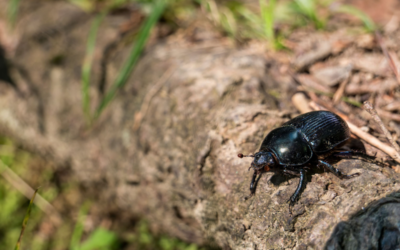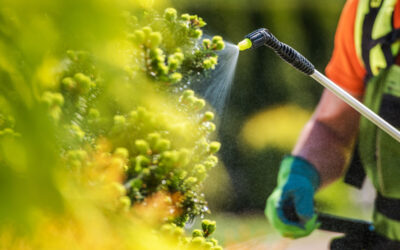Don’t let those bare branches fool you, your trees and shrubs need water year-round.
Their leaves may be long-gone, but your trees and shrubs are still active, even in the dead of winter. When cold weather comes, trees redirect their energy from above-ground growth and leaf and seed production to storing nutrients and expanding their root systems. And they need water to do it.
How Much Water Do Your Trees Need?
Colorado winters can be extremely dry, with spotty snowfall and desiccating winds. While snow melt provides some water, your trees may need more than you realize. Colorado State University recommends 10 gallons per inch of trunk diameter spread evenly across the tree’s root zone, typically the area below the spread of the branches, each time you water.
Smaller trees (up to 3” diameter trunks) need water weekly; medium trees (4-8” trunks), every ten days. Larger trees can be watered twice a month at 15 gallons per trunk inch. So for a tree with a ten-inch trunk that’s branches spread 20 feet (about 300 square feet), you need 150 gallons spread over 300 square feet.
How Much Water Do I Get From Snow?
Snow melt can provide some of the required moisture, but winter snow in Colorado tends to be powdery and dry, so unless there’s a lot of it, you’ll still want to supplement it with watering.
Four or five inches of heavy, wet snow can contain about an inch of water, but the powdery, dry snow common in Colorado winters may need 20 inches of depth to yield one inch of water. Your local weather service website should have an accurate measure of the water in a recent snowfall. One inch of water has about 62 gallons per 100 square feet, so you can use that number to calculate the amount of moisture your trees got from the snow—presuming it made its way into the ground.
How Do I Know How Much Water to Run?
Even if you have a sprinkler system, it’s presumably shut off for the winter, so its meter won’t help, and manual systems will vary in the number of gallons per minute they deliver. For instance, a soaker hose will deliver much less water per minute than a sprayer. Many sprinklers and other devices list how many gallons per minute they deliver, so it’s a simple calculation to know how long to run them. Another option is to put a water flow timer on your hose bibb and set it to the amount you need. They’re available at most hardware, garden, and home improvement stores. Just be sure to disconnect the meter and any hoses when you’re done to prevent damage from an overnight freeze.
Winter Watering Challenges in a Cold Climate
Winter watering presents some special challenges in Colorado’s cold, dry climate. Because much of our soil is compacted clay, water isn’t absorbed as quickly as it is in looser soils. Dry winter winds accelerate evaporation, and low humidity can cause snow to evaporate before it melts, a process known as sublimation. Plus, frozen ground won’t let water penetrate, so you need to water when the air temperature is at least 40°F and the snow cover has melted.
The key to effective watering is getting sufficient water deep enough to reach the active root system, and that means either slow watering with a soaker hose or deep-root watering with an injector. Because of the time it takes to deliver water with a soaker hose, start watering in late morning or early afternoon so the water has time to penetrate before the ground freezes again. Deep-root watering is quicker, so it can be done any time the soil is workable.
Colorado State University Extension says you should pay special attention to new plantings and shallow-rooted trees. These include European white and paper birches; Norway, silver, red, Rocky Mountain and hybrid maples; lindens, alders, hornbeams, dogwoods, willows, and mountain ashes. Several evergreens also benefit from winter watering, including spruce, fir, arborvitae, yew, grape-holly, boxwood, and Manhattan euonymus.
Plants in exposed areas are particularly vulnerable to drying winds and winter sun scorch, and reflected heat from nearby structures also adds to drying out of soil and root systems. Woody plants also benefit from mulch to conserve soil moisture.
Need Help? Call a Pro
If you want to avoid the hassle of winter watering, Donovan Arborists offers Deep Root Water and Fertilizing Services. We use injectors to deliver water to the critical root zone 6-12” below the soil surface. It’s quick and efficient, and we can add fertilizer if the need exists.
In addition to winter watering, Donovan Arborists seasonal tree trimming and shrub shearing services in the Denver area. We’re happy to give free estimates to homeowners and property managers for any services they may need.




